And a very warm welcome to Mexico it was – in more ways than one ! A stifling hot day at around 38 degrees but wonderfully welcoming and friendly Mexican authorities who made the border crossing a breeze. On display at all times was the typical Mexican charm and friendliness that international visitors invariably receive when arriving. No line up – we were automatically ‘approved’ via their red light/green light system and drove right across ! Were it not for our need to disclose that we would be there longer than 7 days and also exploring beyond just the Baja peninsular, that would have been it. The T.I.P. ( temporary import permit ) for the vehicle required a $400 USD deposit ( the amount is based on the age of vehicle – newer means more expensive ), refunded when we left as long as we did not stay more than 180 days. We also paid $30 USD each for our tourist cards because of our extended stay. The documentation process was seamless, if a little repetitive, and with a wad of papers in hand, 45 mins later we were on our way. We spent much longer getting in to the US ! While one can travel the Baja without a TIP, we will need one when we ferry from LaPaz to Mazatlan and others had advised that it was simply much easier and faster to do it as we entered in Tecate. Also nice to have that administrative detail out of the way early.

Tecate, on the US side, is a proverbially sleepy “one horse town” while on the Mexican side it is a much bigger place. We were easily able to re- stock our supplies ( having thrown out our remaining meats, veggies and cheeses before crossing – a complete waste as it turned out, since the Mexicans never asked if we had any with us ). The supermarket was stocked with everything we needed, including all the pancake mix and maple syrup Lois insisted we buy before leaving the US – “Jeff, I know they don’t have this stuff down there”. Well, we now have 10lbs of the former and a full litre of the latter – should see us through to Christmas !

The goal on day one was to get in to Mexico, get the TIP, get stocked up, get cashed up ( ATM’s everywhere – and in English ) so with all that done before lunch it was on to Highway 3, the “Ruta Del Vino” through the Vallee de Guadalupe and on towards Ensenada. The original plan was to stay at a campground near Guadalupe – as we stopped in we noticed it was right on the highway. Having had our fill of sleepless nights in such places, we checked another spot nearby on iOverlander – it referred to a great winery ( “L.A. Cetto”, founded by an Italian in 1928 and one of Mexico’s oldest ) that offered tastings and wine sales (of course!) and through its participation in the Harvest Host program, allowed visitors to stay overnight. We had experienced the same routine at Tillamook, back in Oregon ( the Blue Heron Cheese Factory ) so knew the drill well. Not only was the wine tasting a lot of fun, and the wine good, but the young server there ( Adrian ) also gave us some great Baja tips and was very excited to tell us he was about to head off to Canada for 2 weeks. Not just Canada, not just BC, but right to our home town of Kelowna where he was going to work in the same capacity at the “Off The Grid” winery – talk about a small world ! And, we had the winery to ourselves for a night. Peaceful, quiet, and watched over all the while by their 24 hour guard. The drive through the Ruta Del Vino was scenic but otherwise uneventful – in fact, until just before we got there we had no idea Mexico even had a wine industry so we were amazed at all the vineyards- this is where most of their wine comes from.
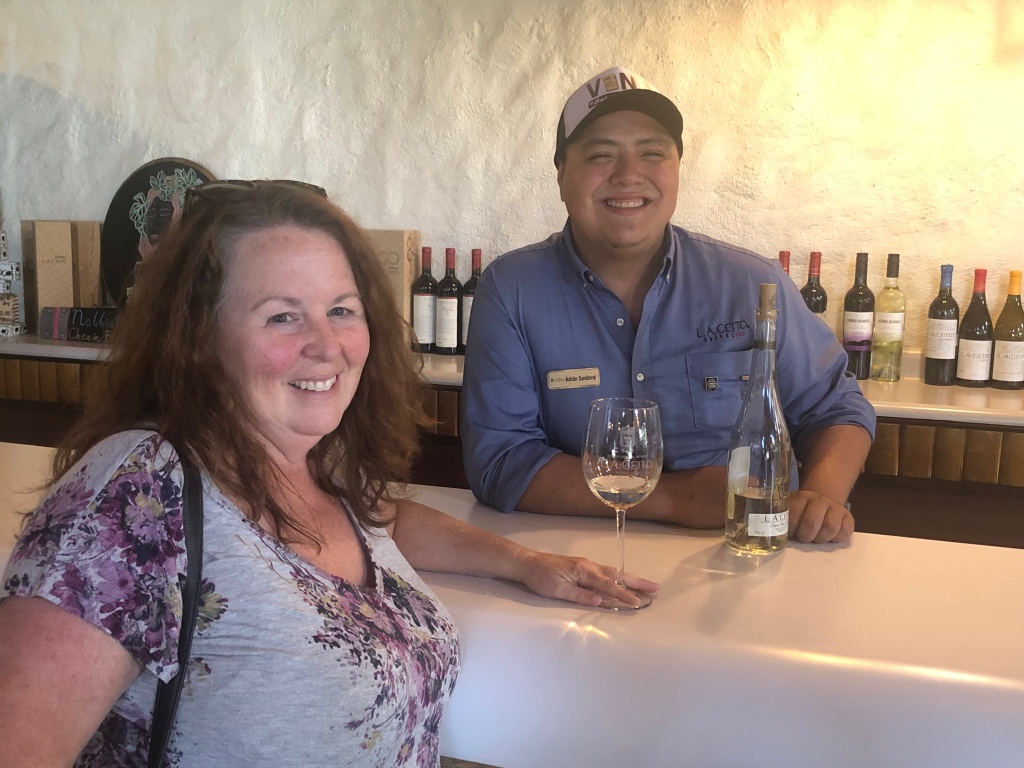



In Ensenada we picked up a new SIM card and were astonished at how generous and flexible they are in Mexico – lots of data ( 3 MB ) along with unlimited calls, and texts within Mexico, the US, and Canada with no contract all for 200 pesos ( $10 USD ) – you cant touch that where we live ! Ensenada itself is not especially appealing – we knew we had to get further south for the good stuff so used the rest of the day to get through the series of small, dusty towns that line Highway 1 to the south. It quickly became obvious that it would be pretty slow going on the Baja, at least the northern half; seemed like we spent most of the day in the truck ( we actually didn’t ) and only travelled 200kms. Lots of road work, lots of towns but the scenery did start to improve with glimpses of the coast here and there.
While our first night camping near San Quintin was not especially memorable ( except for the sunsets – such beautiful sunsets here ), a short drive the next day had us just north of El Rosario where we pulled into a site that other overlanders had raved about. Canyon Camp was a privately owned piece of beachfront in a secluded canyon whose owner appeared to be preparing it to be a formal campsite. Meanwhile, overlanders were welcome to use it at no cost. Complete with basic toilets, palapa and BBQ areas, it was indeed a great find. Bonus – we had it all to ourselves for the time we were there save for a visit by some local fisherman and the owner’s brother who had come to water the palm trees. Truly memorable spot – beautiful, quiet, easy to get to and with no city lights in the area it was a wonderful night just to star-gaze. Managed to get the drone out and got a couple of great shots from above before a minor mishap occurred and the drone went off on its own – fortunately landing safely on land and not in the Pacific !


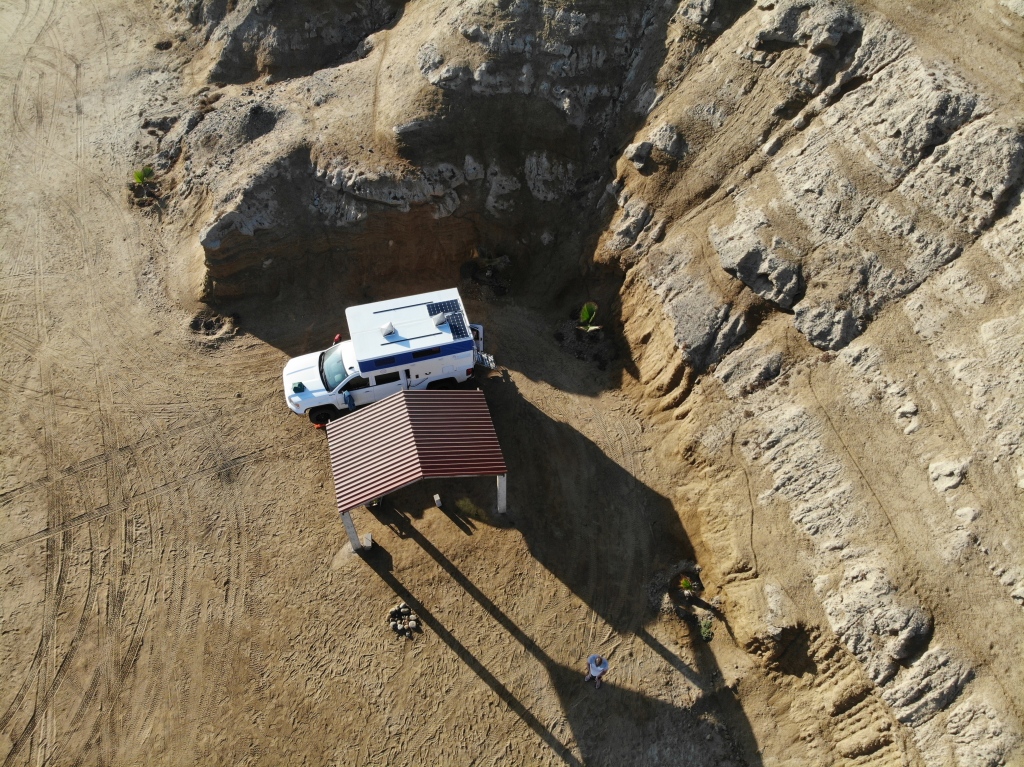

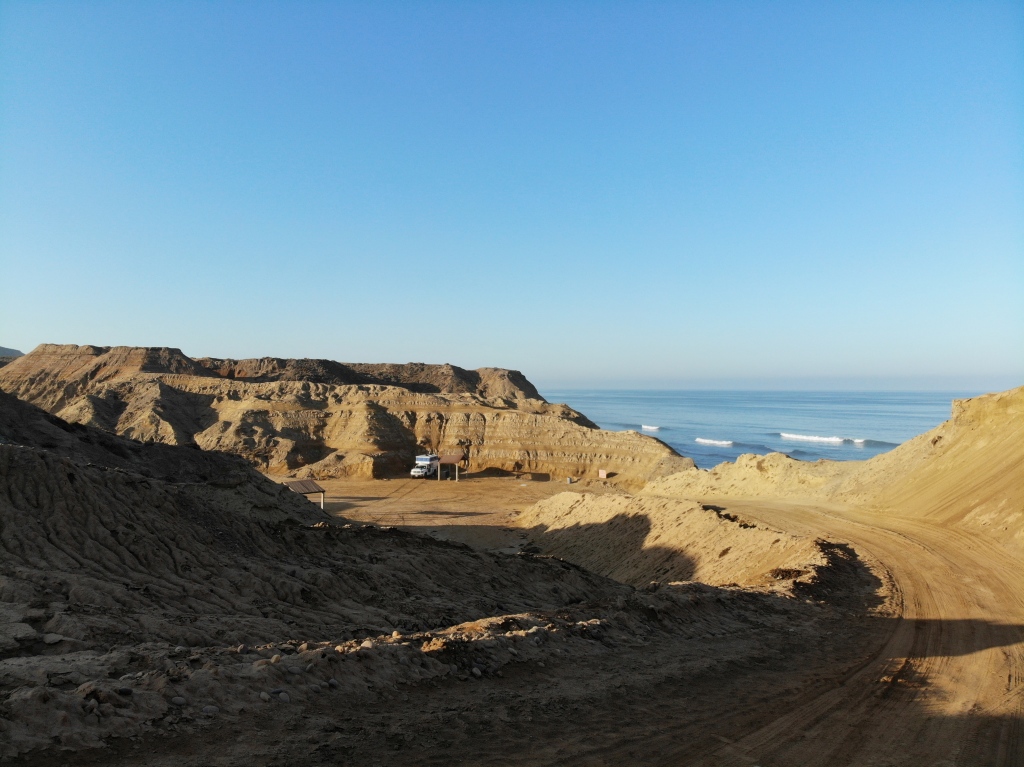

While we could have stayed longer at Canyon camp, we had left ourselves short of some necessities so drove on the next afternoon making our way south on the “Transpeninsulare” ( the main, and really only, road through the Baja ) through what one might describe as the spine of Baja – a long stretch down the middle, neither the Pacific ( to the west ) nor the Sea of Cortez ( to our east) visible most of the time. Very typical Baja scenery in this part – dry, rocky hills, lots of cactus everywhere, very hot and very long stretches between towns. There is a real abscence of shade trees here so, absent a good air conditioner it is hard to escape the heat. At least in this part of Baja it was ‘dry’ heat. That would soon change !

The town of Guerrero Negro divides the Baja peninsular in two – to the north, Baja California and to the south ( an hour ahead and on Mountain time ), Baja California Sur. Apart from being the beginning of generally better quality roads than in the north, it is as non-descript a place as you will find anywhere and was no more than a pit stop and simple overnight here….Mulege and the famous beaches of Bahia Conception lay just beyond.

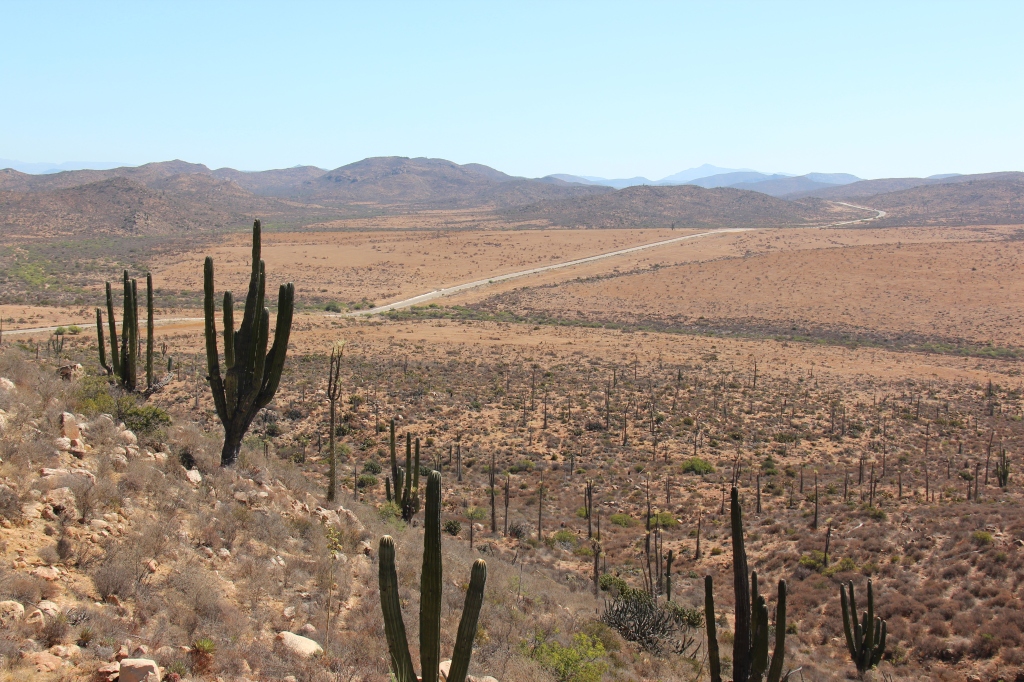

Mulege is somewhat of an oasis town and very popular with gringo “snowbirds” ( retirees escaping the northern winter ) but they come down in November – not August. It’s easy to see why – in Mulege, as pretty as it was with palm trees and cobblestone streets, it is stiflingly humid this time of year. Brutally so in fact. That and the blitz storm at 2.00 am made for an unpleasant layover. We’d load up next morning and explore the beaches, where, we figured, it “had to be” cooler. The beaches were stunning indeed – and, again, we had them all to ourselves. At every turn on the road south a new vista opened up more white sand, more palapa’s, more stunning turquoise sea – and no people. If you wanted privacy, this was indeed your place ! Some friendly locals advised us that the Sea of Cortez side of Baja, not getting a true ocean breeze, is always hotter and much more humid than the Pacific side. The humidity here was not going to change so we decided we’d spend our beach time on the west coast – lots of options further south !
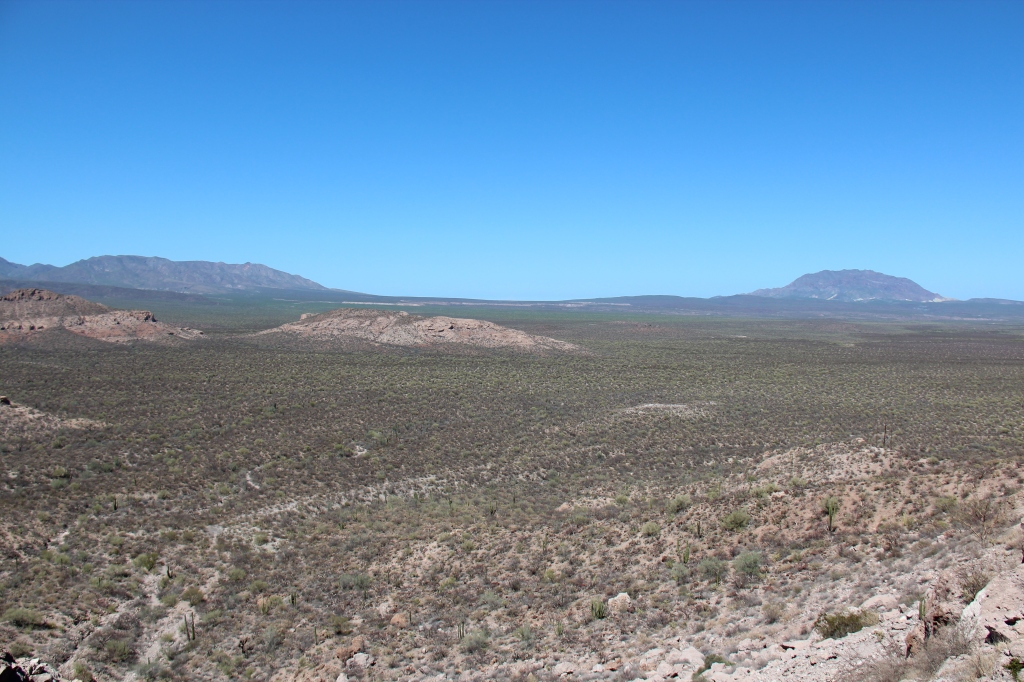

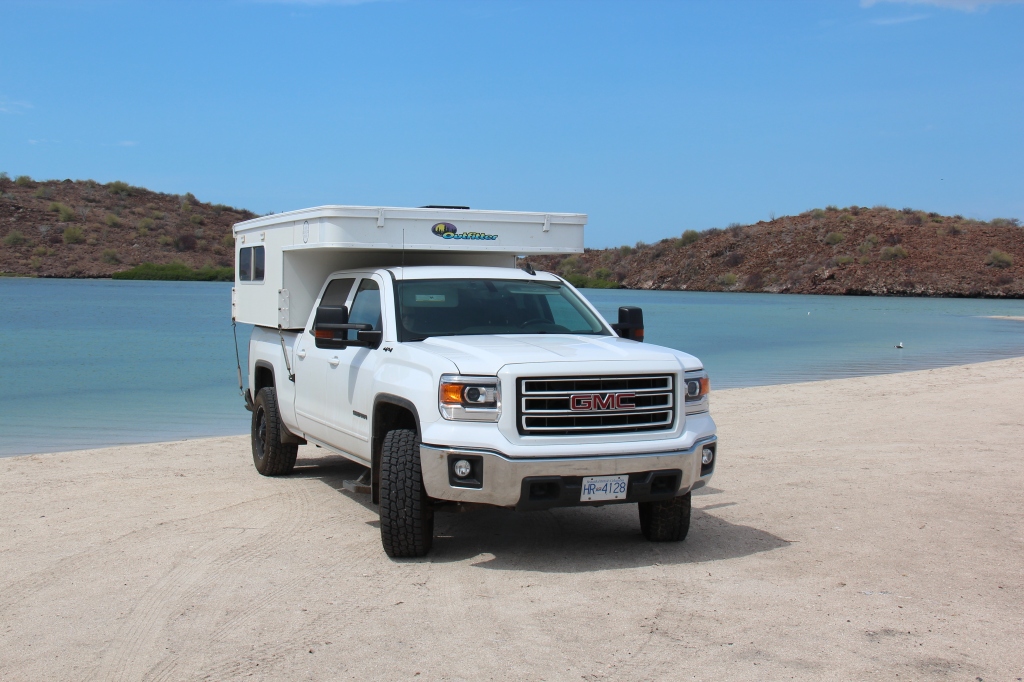

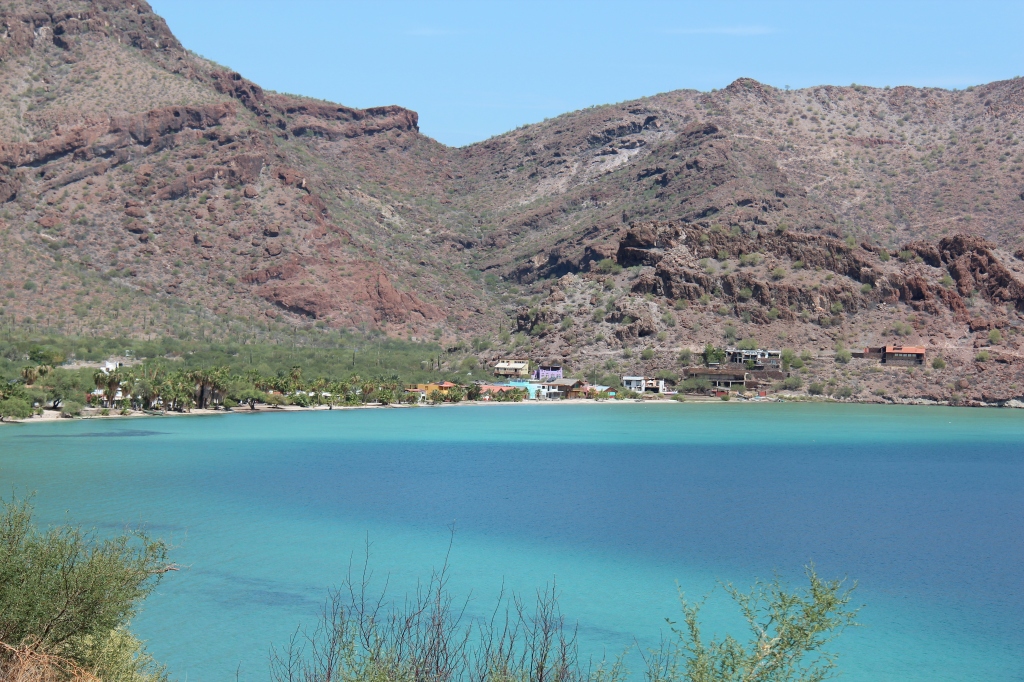


Prior to getting to the southern beaches of Cabo San Lucas, Todos Santos and others, we did get to enjoy a restful couple of days at what must rate as one of Baja’s real gems – the town of Loreto. Picturesque, easy to navigate, filled with history ( the original Spanish settlement on the Baja occurred here in1697 ), great food and friendly people it was delightful. Making life much easier for us, the campground was located right downtown – a 1 minute walk to the Malecon, town square and all the sights including Loreto’s signature 250 year old “Mission”. A great spot for those who like a laid back feel and who want to walk everywhere.



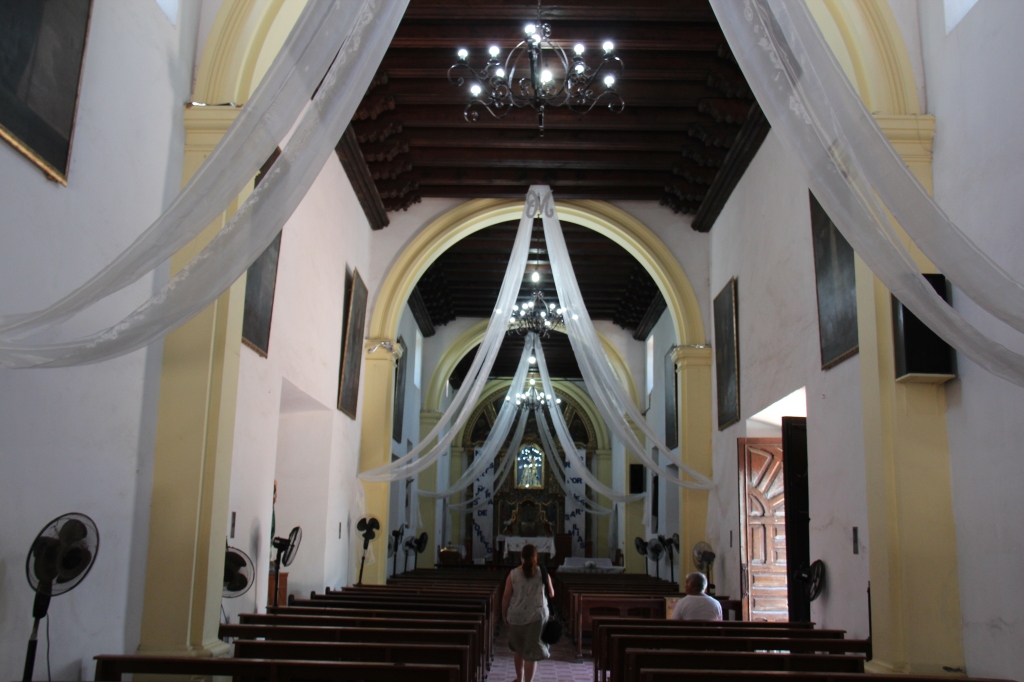
Our week drew to a close in Loreto – we’d really enjoyed this place, and got great tips on the southern Baja from Ed, a resident American living in Loreto. Ed had a peculiar talent rare among Americans ( in fact, rare even among Australians ) – he played the didgeridoo! After beers one night he said he’d surprise us – not in a million years did I expect to hear an American play the didgeridoo !

We’re always on the lookout for interesting signs and while we don’t generally pay much attention to local graffiti, this one caught our eye – as we all know, much of the western USA once belonged to Mexico and the fellow who scrawled this one certainly had a creative solution for Mr Trump’s problem with unwanted immigrants from the south; check this one out !


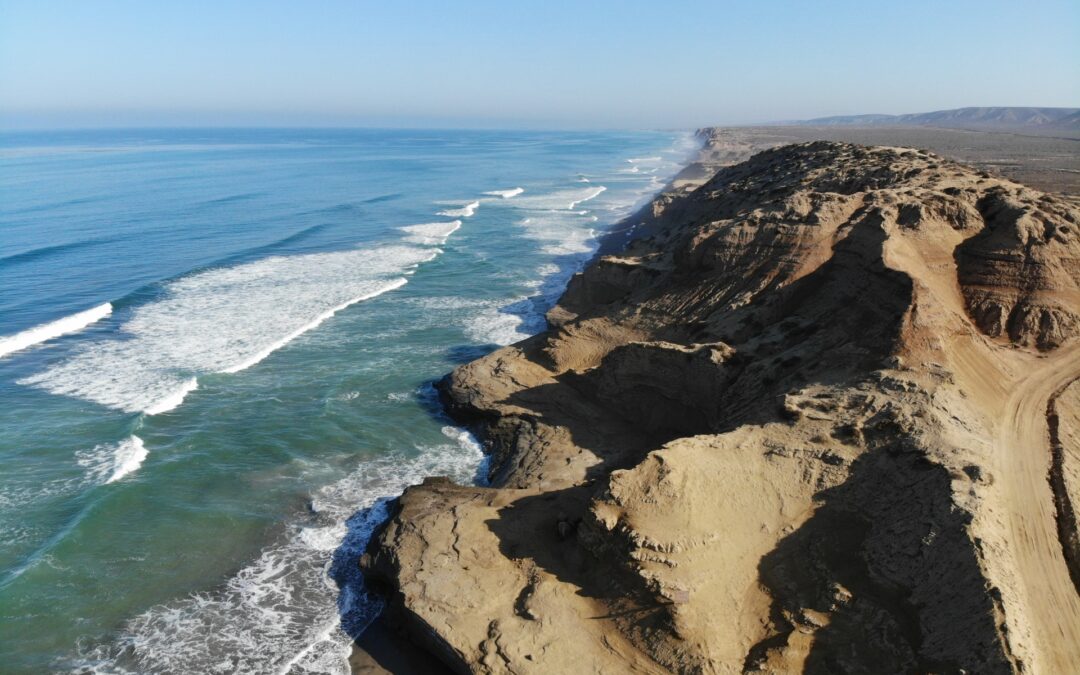
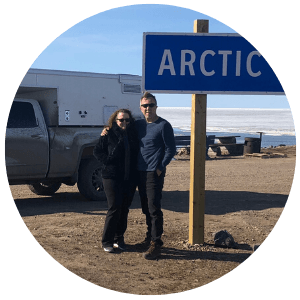
Thanks for the update. I really like the drone shots. Is it is just a matter of time before you lose it once and for all? I hope not.
Enjoy your travels and keep us posted.
Yes, absolutely gut wrenching moment as it just disappeared behind the cliff in those pictures ! Scaled the cliff and found it covered in dust – but seemingly ok !!!
Yes, love the drone shots as well. I think Lois needs to be the DDD. Designated Drone Driver! What a small world running into Adrian who will be coming to Kelowna.
Keep safe and enjoy the Mexican fiestas and siestas!
Kim Pa
Hi Kim,
Yes that is wild eh….? I think he said Sept 9 he was going, so if you happen to decide to visit a winery in the 2 weeks following that, go to his and say hi ! And, tell him you know us !
Nice blog guys! We are not far from Canyon Campsite so will check that out tomorrow night 🙂 also LOVE the graffiti. The beaches down there look beautiful! Looking forward to following your updates.
Hi Renee !
Thank you…..you guys do a pretty mean blog yourselves ! You will LOVE Canyon camp…..best place we have been to so far for that kind of thing ! You will likely meet Illario, the owner’s brother, who comes to water the palm trees. Nice guy, speaks a little English too. Other than possibly some fishermen who wander down, guarantee you will have it to yourselves ! Enjoy ! I think I signed on to your blog – if not, sign me up so we can keep tabs on you, lol !!!
Spectacular! Strange that the drone did that. Perhaps not enough satellites locked on?
Yes, it was strange……I thought when signal was lost they were supposed to fly ‘back to base’ ( ie, land at my feet !). Just lucky I could retrieve it?
WOW again with all those great pictures!! That Canyon Camp ground looks wild and the Mulege camp. What are the odds that you meet Adrian and he’s coming to Kelowna. I thought maybe you would have stayed a week at the winery (hehe)!! Loreto looks like an awesome place to visit!!! Can’t wait for the next post. Mmmmm I wonder who you will meet next? 😉
Cheers my friends!!
Jennifer
Yes, there are great things to see and experience but it’s the people you meet ( and sometimes the signs/graffiti you notice ) that keep it interesting !